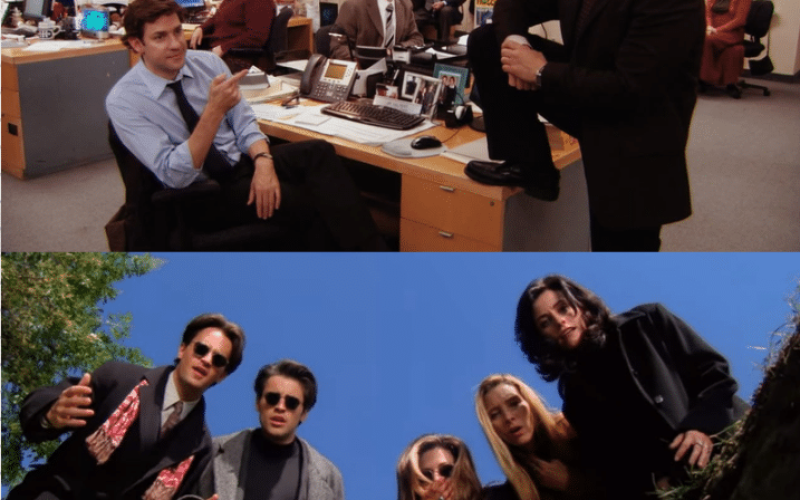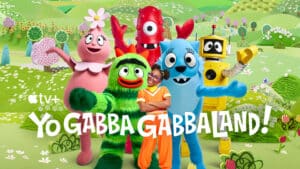Let’s be real—if you’ve ever owned a TV (or a streaming account), you’ve probably watched Friends or The Office… maybe both, more times than you care to admit. These two sitcom giants have been battling it out for pop culture dominance for years. But now that we’ve had some distance—and way too many rewatches—it’s time to ask the big question: Which one actually holds up better today? We’re breaking it down with zero bias and all the receipts.
Summary
Before we get into the nitty-gritty, here’s a quick refresher on the contenders.
Friends debuted in 1994 and ran for 10 seasons, following six friends—Rachel, Ross, Monica, Chandler, Joey, and Phoebe—living, loving, and hanging out way too much at a coffee shop in New York. It turned its cast into global superstars and became a comfort-show staple for entire generations.
The Office (U.S. version) launched in 2005 and gave us a different vibe: a documentary-style peek inside the most dysfunctional paper company on Earth, Dunder Mifflin. Led by the cringey but oddly endearing Michael Scott, the show carved out its own legacy with awkward humor, painfully relatable characters, and a ton of heart.
Both shows are still wildly popular in the streaming world—Friends made headlines when it left Netflix for Max, and The Office found a new home (and fanbase) on Peacock. According to Nielsen, they’re still pulling top-tier numbers, even years after their finales.
So yeah, they’re both legends. But depending on what kind of laughs you’re after, only one might be worth your next binge.
Analysis
Now that we’ve covered the basics, let’s get into the real question: Which show actually delivers where it counts? From how they make us laugh to how they’ve aged (or haven’t), Friends and The Office offer very different flavors of comedy—and both come with their own highs and lows.
Humor

Humor is subjective, but there’s no denying that Friends and The Office come from opposite ends of the sitcom spectrum.
Friends is built around traditional sitcom beats: clear setups, punchy one-liners, and that ever-present laugh track to guide the audience. It’s cozy, familiar, and easy to digest. Characters like Joey and Chandler became comedy staples thanks to their goofy charm and timing. Even decades later, Joey’s “How you doin’?” still lands, and Chandler’s relentless sarcasm feels surprisingly modern.
But here’s the catch—some of the jokes haven’t aged particularly well. Storylines about gender identity, same-sex parenting, or body image often rely on stereotypes or play for cheap laughs. For longtime fans, it might feel nostalgic. For new viewers? It can feel a little tone-deaf.
The Office flips the script entirely. It leans into awkward pauses, dry wit, and cringe-inducing situations. Michael Scott’s oblivious one-liners are legendary (“I declare bankruptcy!”), and the show doesn’t spoon-feed the punchlines. You either catch them—or you don’t. It’s not as universally appealing, especially for viewers who prefer fast-paced or more obvious humor, but if you vibe with it, it’s laugh-out-loud funny.
And let’s not forget: some of the show’s best jokes are hidden in the background—Creed doing something weird, Dwight whispering nonsense to himself, or Kevin spilling a pot of chili like it’s Shakespearean tragedy.
Cultural Impact
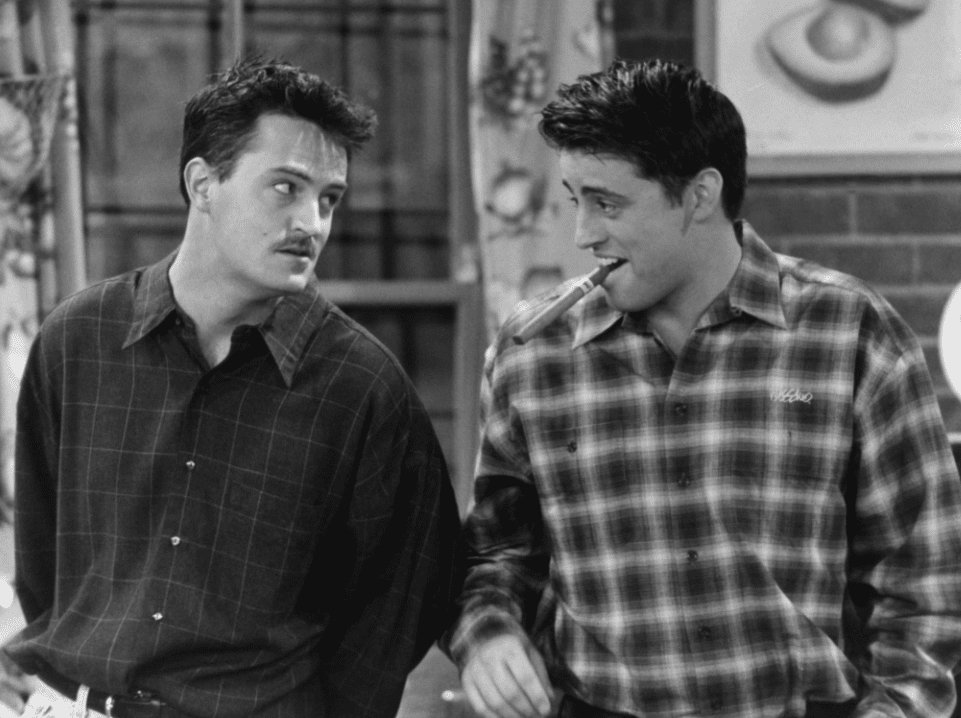
Let’s talk legacy. Friends is pop culture royalty. From “We were on a break!” to The Rachel haircut, it practically defined ’90s television. The cast became household names, the theme song is instantly recognizable, and the fashion—yes, even the low-rise jeans—is coming back around.
Even now, Gen Z is discovering Friends for the first time, proving it still has staying power. It’s not just a show; it’s a cultural blueprint for friendship, apartment envy, and on-again, off-again chaos.
The Office, meanwhile, left its mark in a quieter but equally powerful way. It helped usher in a new era of mockumentary-style comedies and showed that workplace stories could be both absurd and emotionally resonant. You see its fingerprints all over shows like Parks and Recreation, Brooklyn Nine-Nine, and Abbott Elementary.
And let’s be honest—Michael Scott’s quotes live rent-free on social media. Whether it’s “That’s what she said” or “I am Beyoncé, always,” it’s basically meme fuel for the internet.
Character Development
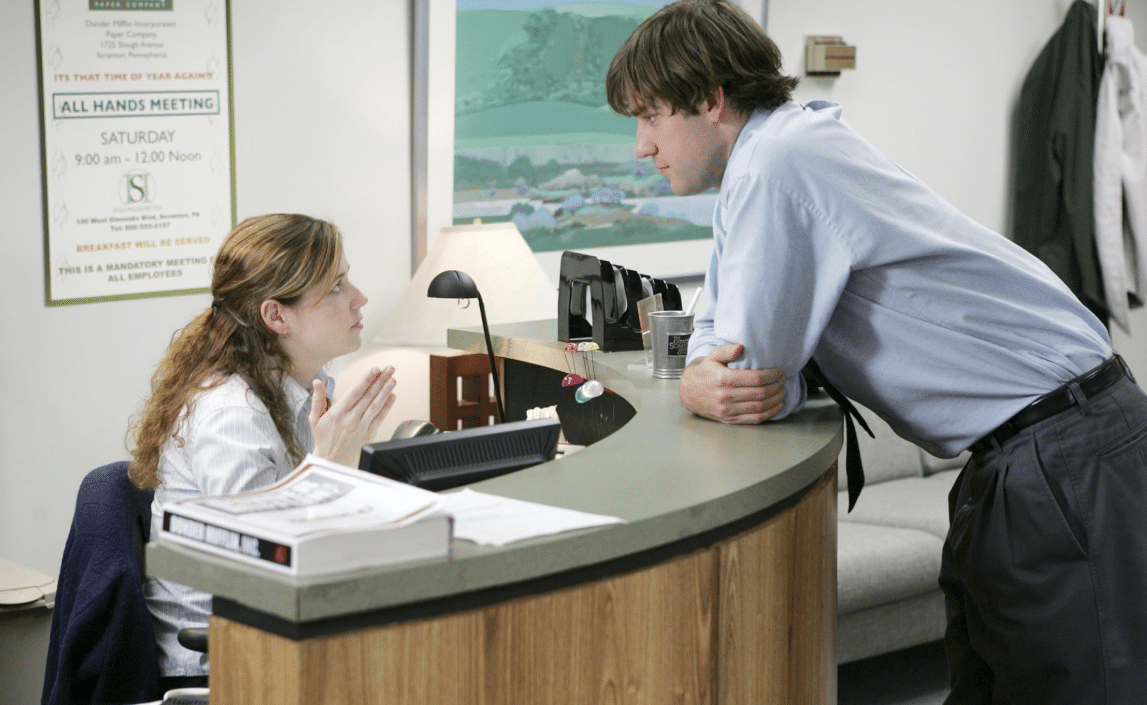
When it comes to character arcs, Friends stays pretty consistent across its 10-year run. Each main character has a clear journey: Rachel goes from spoiled rich girl to independent fashion exec, Chandler matures from commitment-phobe to family man, and Monica finds confidence in both her career and personal life. It’s easy to track their growth—even if some of it (like Ross’s increasingly unhinged jealousy) feels exaggerated in hindsight.
The Office, on the other hand, has a rock-solid first half. Jim and Pam’s slow-burn romance is one of the best in TV history, and Dwight Schrute transforms from a cartoonish villain to an oddly lovable oddball. Michael Scott, who starts as painfully inappropriate, slowly reveals depth and vulnerability that you never see coming.
But once Michael exits in Season 7, the tone shifts. The show starts grasping for direction, and certain characters—like Andy Bernard—go through bizarre, inconsistent arcs that don’t really pay off. Still, even in the uneven later seasons, side characters like Stanley, Phyllis, Meredith, and Kevin continue to shine in weird and wonderful ways.
Rewatchability

Let’s be honest, this is the real test. Which show do you throw on after a long day?
Friends is the definition of comfort TV. You can drop into any episode, halfway through a season, and feel right at home. The stakes are low, the pacing is fast, and the group dynamic never really changes. It’s like the TV version of mac and cheese: familiar, warm, and always satisfying—even if you’ve had it a hundred times before.
The Office rewards rewatching in a different way. Once you know the characters, you start noticing the subtleties—throwaway lines, background gags, or quiet character beats you missed the first time. That said, it’s harder to keep momentum during the later seasons. Many fans find themselves looping back to Seasons 2–5 instead of pushing through to the end.
Representation & Diversity
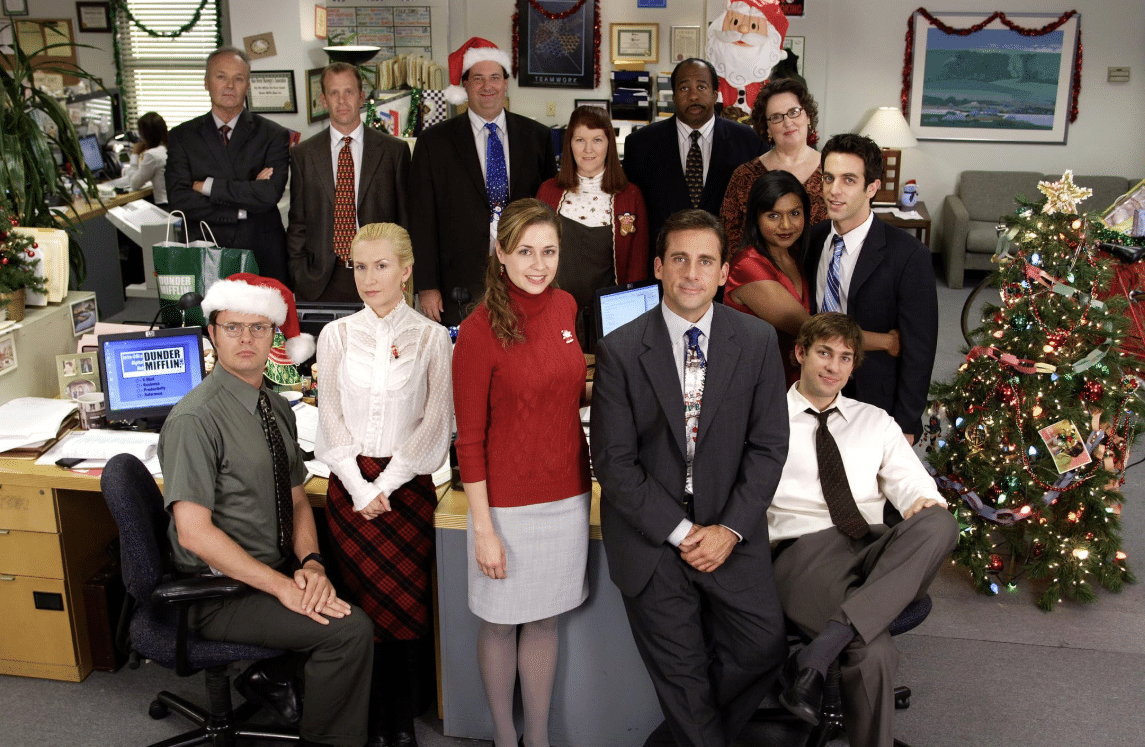
Neither show is exactly a gold standard when it comes to representation, but let’s break it down.
Friends has been heavily criticized for its lack of diversity. Across 10 seasons set in New York—a city with enormous racial and cultural diversity—nearly every main and recurring character is white. Guest appearances from actors like Aisha Tyler (as Charlie) were rare and often short-lived. The show also relied on outdated tropes in its handling of LGBTQ+ topics and body image (hello, “Fat Monica” flashbacks).
The Office fares slightly better in this department. While still predominantly white, the show features more characters of color and includes some diversity in background and personality. Kelly Kapoor (Mindy Kaling) and Stanley Hudson (Leslie David Baker) aren’t just token characters—they have storylines, depth, and standout moments. That said, the show walks a fine line with its humor, and some jokes—especially from Michael—can feel pretty dicey by today’s standards.
Final Thoughts
So after all that, where do we land in the great Friends vs. The Office debate? Honestly, it depends on what you’re looking for in a sitcom. Both shows have carved out lasting legacies, and for good reason—but they offer very different viewing experiences.
Let’s break it down one last time:
Friends — Pros
-
Timeless friendships and chemistry that still feel genuine
-
Easy laughs that don’t require a ton of context
-
Iconic moments, catchphrases, and visuals that are baked into pop culture
Friends — Cons
-
Some jokes haven’t aged well, especially around identity and relationships
-
Storylines can feel repetitive or formulaic on rewatch
The Office — Pros
-
Sharp, unique sense of humor that rewards patient viewers
-
A strong, well-developed ensemble cast
-
Surprisingly emotional moments, especially in earlier seasons
The Office — Cons
-
Takes a few episodes (or even a whole season) to hit its stride
-
Quality dips noticeably in the later seasons after major character exits
So, which one should you watch—or rewatch—right now?
If you want something light, nostalgic, and easy to jump into without much brainpower, the former is your go-to. It’s cozy, classic, and endlessly quotable. But if you’re into smart, layered humor with emotional depth (and don’t mind some secondhand embarrassment), The latter just might be your favorite binge of all time.
Honestly? There’s no wrong answer. You could flip a coin… or, better yet, watch both. I would maybe skip The Office Season 9 and that one Friends episode where Joey speaks French. You’ve been warned.

